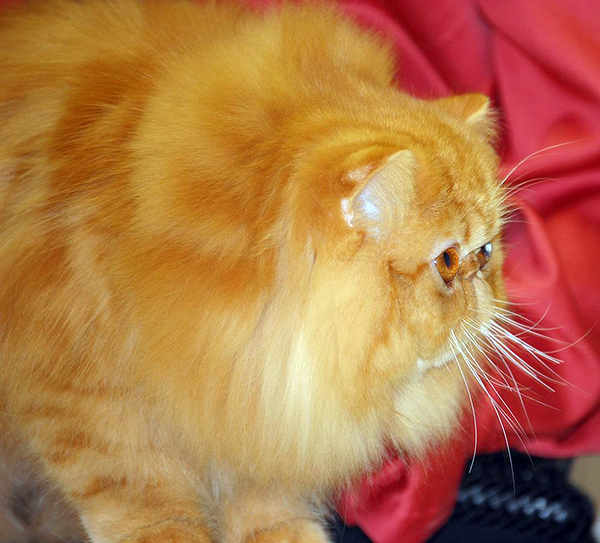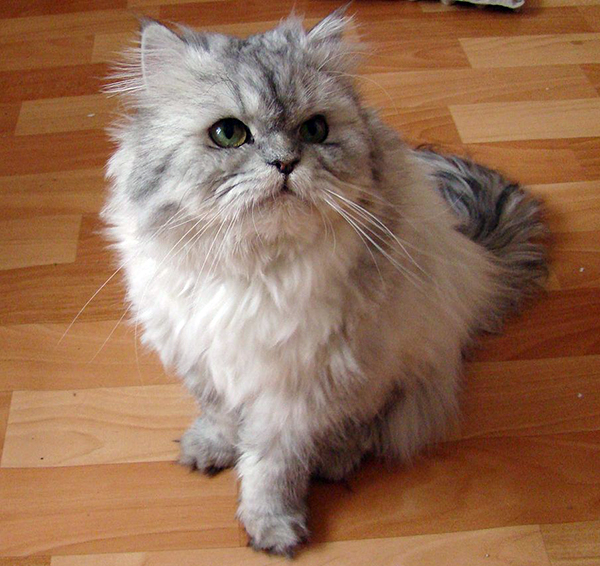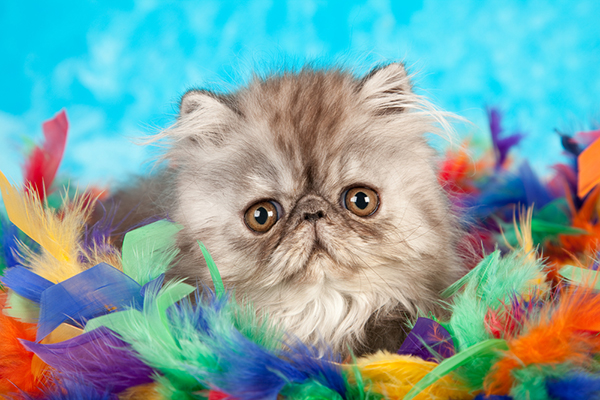The Persian is truly a work of art: With rabbit-soft fur that comes in an amazing array of colors and patterns and huge round eyes that observe the world with placid contentment, it’s no wonder the Persian is the most popular purebred cat in the United States.
Origins of the Persian Cat
The Persian got its name because the breed was thought to have originated from Iran (called Persia back in those days), but nobody knows for sure exactly where it came from. However, hieroglyphs in the area dating as far back as 1684 BCE do depict longhaired cats.
One thing we do know is that Persians appeared in the first cat shows held in England, and people began importing them to the U.S. in 1900. Since that day, the breed’s popularity has continued to grow.
Appearance
The Persians of today don’t look much like the original Persians shown in the late 1800s, as breeders have continually bred for more exaggerated features — rounder heads, shorter noses, smaller ears, heavier bodies, and the like.
Aside from its flat face, which has been described as “pansy-like” in its appearance, the Persian’s most distinguishing characteristic is its long, luxurious fur. Persians’ fur comes in solid colors, tabby patterns, bicolor and particolor (calico and tortoiseshell), as well as rarer patterns such as cameo, shaded, smoke, and chinchilla.

Health and longevity
Persians’ beauty does come at a cost. The average lifespan of a Persian is between 12 and 14 years, largely because the breeding that has given the Persian its unique appearance has also increased the risk of health problems.
Many Persians have brachycephalic syndrome — although their skulls and faces are short, they have normal-sized tongues and palates, which leads to breathing difficulties. Malformed tear ducts lead to weepy eyes, and the eyelashes can grow to point inward, a condition called entropion. Their teeth may not fit properly in their mouths, making it hard for them to chew or eat properly. Persians may have difficulty giving birth and may require Cesarean section to safely deliver their kittens. Polycystic kidney disease is relatively common in Persians, but responsible breeders will not breed cats with the genetic markers for PKD.

What it’s like to live with a Persian
Your Persian is a gentle, intelligent cat who would much rather be next to you on the sofa than running all over the place and tearing up the curtains. She is a quiet cat, and when she does talk, her voice is low and melodic. She’s definitely a “bush dweller” among cats — she’d rather be on the ground than high atop a bookshelf. She enjoys play time just as much as any other cat, though, so don’t forget to get out that thing on a string and let her chase it around.
You’ll have to comb your Persian every day to prevent matting. Because of the breed’s proneness to dental issues, you’ll want to get her used to having her teeth brushed. The good news is that Persians are so calm and easygoing that they’ll tolerate and probably even enjoy the attention.

Persian trivia bits
- Persians have hit the big time on the silver screen. Among the roles Persians have played: Mr. Tinkles, the antagonist in Cats and Dogs; the cat owned by James Bond villain Ernst Stavro Blofeld; and the original Mr. Bigglesworth, the cat owned by Dr. Evil in the Austin Powers movies.
- The Persian has the longest, thickest fur of any domestic cat, with a top coat that can be as long as five inches.
- A Persian gave birth to the second largest litter of kittens ever. On Dec. 16, 1974, a Persian named Bluebell, owned by Elenore Dawson of Wellington CP, South Africa, gave birth to 14 kittens, all of whom survived.
Do you have a Persian in your home? What’s it like to live with him or her? Please share your thoughts and photos of your Persian in the comments.

Read more about cat breeds on Catster:
- 5 Purebred Cat Breeds I’d Have a Hard Time Saying No To
- Get to Know the Egyptian Mau: A Sensitive Cat With a Wild Look
- Get to Know the Siberian: The Folk Cat of the Great Frozen North
- Get to Know the Manx: A Mighty Hunter and Sweet Companion
- Get to Know the American Shorthair: One of America’s Original Cats








